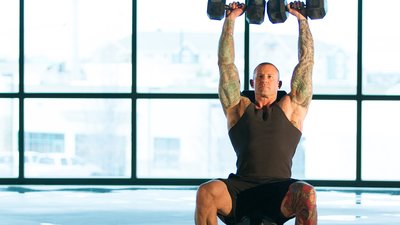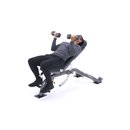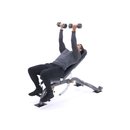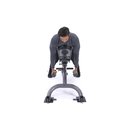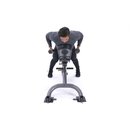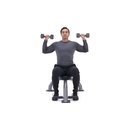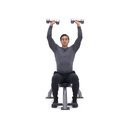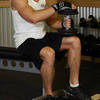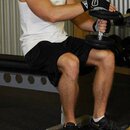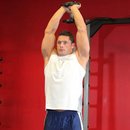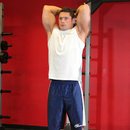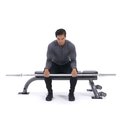Even the most tried-and-true training techniques can use a tweak every now and then. The classic 5x5 scheme is no exception. This scheme has always produced impressive results in the gym, and now I'm helping it evolve for even greater gains.
The 5x5 protocol has been around for at least half a century, pioneered by iconic bodybuilder "Reg" Park, a three-time Mr. Universe in the 1950s and '60s and Arnold Schwarzenegger's boyhood idol. The protocol is exactly what it sounds like: 5 sets of 5 reps on a given exercise. The 5-rep count is something of a "tweener" because it falls within the well-established 8-12-rep range ideal for building size, and the 1-3-rep range favored by powerlifters for maximizing pure strength.
You might well ask, "Are sets of 5 reps better for size or strength?" After sifting through anecdotal and empirical research, my answer is unequivocally that it helps both. When you follow my version of 5x5s, you'll be promoting muscle building even more.
My Twist On A Classic
A typical 5x5 program entails using a relatively heavy weight and taking ample rest periods between sets (2-3 minutes or more). These workouts are nearly always done as body-part split routines, ranging from upper-body/lower-body splits to 3-5-day splits.
My version of the classic 5x5s keeps the weight heavy, but differs in two important ways. First, you'll hit each major muscle group every day. Second, you'll have shorter rest periods because you'll essentially be competing against yourself to complete each exercise (5 sets, 5 reps) in less time than you did the day before.
By making this a full-body exercise, you will maximize fat loss, since full-body training is better for burning body fat than split-body routines. The self-competition aspect will help you systematically increase your intensity so you can pack on more muscle mass.
Sound challenging? Good, that's the point!
My 5x5 routine consists of one more five: five workouts. You'll be doing 10 exercises in each session, one move per body part for chest, back, legs, shoulders, traps, biceps, triceps, forearms, calves, and abs.
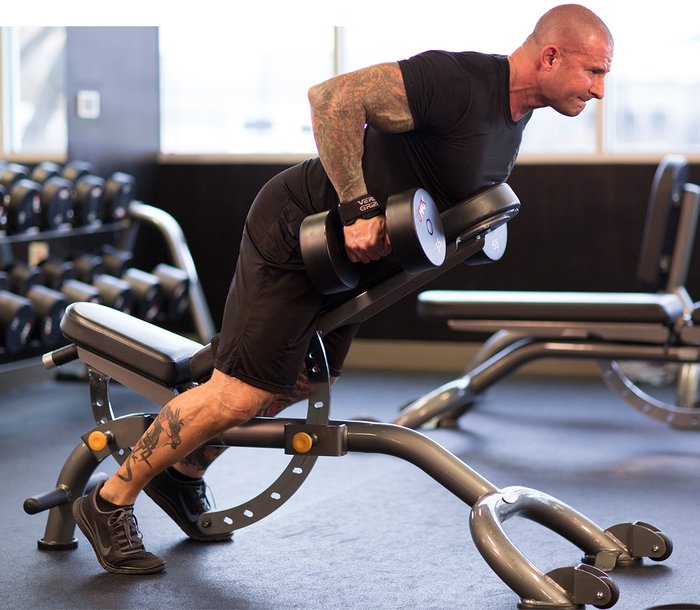
The one major difference between this program and my others is that you'll do the same exercises—and use the same weight—in all five workouts. Same exercises, same weights, same number of sets and reps per exercise (5x5). So you'll be doing the exact same workout for five straight days? Nope. One variable will change daily…time.
Every workout, your goal will be to complete the 5 sets of 5 reps for each exercise in less time than it took the day before. If and when you're able to accomplish this, it means your training intensity is increasing from workout to workout.
Select Your Exercises
To prepare for your first of five workouts (Workout 1), select your 10 exercises, one for each muscle group. You'll be doing the exact same exercises every day, so choose well. Pick pretty much any type of exercises you want, from free-weight moves and machines to cables, kettlebells, and the Smith machine. I recommend selecting compound (multijoint) movements for large body parts—chest, back, legs, and shoulders—but you don't have to. If you'd rather do cable cross-overs than dumbbell bench presses for five days, knock yourself out.
Pick exercises you can go sufficiently heavy on, since you'll be doing just 5 reps per set. In other words, bodyweight crunches and sit-ups are probably not your best options for ab exercises. To give yourself more of a challenge, go with something weighted instead, like machine crunches or cable crunches.
Once you know the 10 exercises you're going to do, head to the gym for Workout 1. Don't forget to bring a timer or stopwatch, and something to log your weights and times with. You can use a training log, a spiral notebook, or your phone.

Select Your Weight
Weight selection is sort of hit or miss on this program. Clearly, you don't want to use your true 5-rep max (5RM). There's no way to complete 5 reps with your max weight for 5 reps on 5 successive sets, no matter how long you rest, so you need to undershoot the weight a bit. Given that Workout 1 starts with only 1 minute of rest between sets and each workout the rest gets shorter, you'll definitely need to go much lighter than your 5RM.
How light you go depends on how fast your body can recover in 1 minute between 5 successive sets. Research shows that women recover more quickly between sets than men, and can complete more reps on successive sets. Most people will find that somewhere between their 8-10-rep max is perfect.
If the weight you use for Workout 1 turns out to be too easy, increase the weight while decreasing rest time when you start Workout 2. If you overshoot the weight in Workout 1 and can't complete all 5 reps on all 5 sets, just reduce the weight as you reduce the time for Workout 2. Once you find a weight that works, use that same weight from then on.
Keep Good Records
Record the weight you've chosen in your training log or phone so you remember how much weight to use on that exercise through the end of the five-day program.
Once you've got your weight picked out and are ready to go, start your timer, then do 5 sets of 5 reps with that weight using 1-minute rest periods. After your last set, record how long it took you to do all 25 reps. It should take you somewhere around 5-6 minutes to compete all 5 sets of 5 reps. At that rate, Workout 1 should take just under an hour.
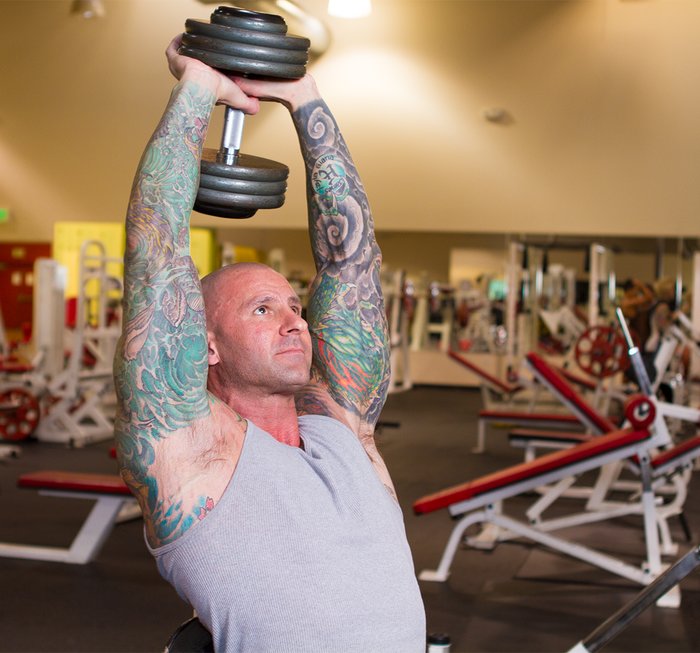
Once you've recorded your time, go right to the next exercise and repeat the process. Do this for all 10 exercises.
The next day (Workout 2), you'll be doing what looks like the same workout on paper, but your goal will be to beat your previous completion times for every exercise. If it took you 8:52 to do 5 sets of 5 reps on rows, shorten your rest periods to knock 10-20 seconds off that time. Whatever your new time is, jot it down.
Do the same thing the next three days (Workouts 3-5)—the same 10 exercises, the same weights, and the same 5x5 set/rep scheme. With every new workout, try to beat your overall time from the day before.
I designed this program to be done on five consecutive days (typically Monday-Friday), but if you're a beginner or intermediate, or need additional recovery time, feel free to insert rest days between workouts. If you're only able to get to the gym three days a week, do Workouts 1-3 one week and move Workouts 4 and 5 to the next week.
Don't forget to record the weights you're using. You'll use those same weights on the same exercises for all five workouts. And don't forget to log the time it took you to complete your 25 reps per exercise. That's the one variable that will change from day to day.
My Frequent-Flyer Sample Workout
Below you'll find the 10 exercises I used when I did this program myself. Because of my busy travel schedule, I chose all dumbbell exercises since you can find dumbbells in just about any gym.
In case you're curious, I completed each exercise (5 sets of 5 reps each) on Day 1 in about 5 minutes (between 4:45 and 5:25 to be exact). By Day 5, my times had decreased dramatically to around 2-3 minutes per exercise (2:15 to 3:05).
Want unlimited access to all of my programs and an endless supply of content like this? Visit JimStoppani.com and become a member.

